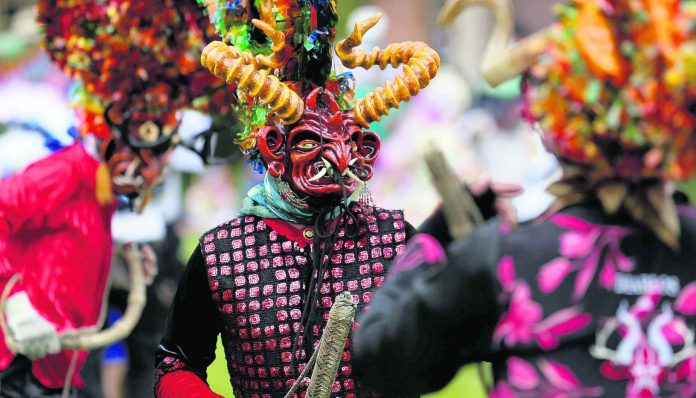
By DOLORES OCHOA
Associated Press
PILLARO, Ecuador (AP) — Talk of the devil and he is bound to appear, the saying goes. In Ecuador, that means even during the pandemic.
An Andean village festival known as the Diablada, or dance of the devils, was muted Wednesday because of the health emergency. But a small group of people in demon and other costumes still danced without spectators, obeying municipal rules that no more than 30 people participate as Ecuador struggles to contain the spread of the coronavirus.
The costumed fiends assembled in a designated area in Pillaro, denied the chance to strut through streets and grimace at big crowds as they previously did, though scenes of the trimmed festival circulated on social media.
Thousands of tourists have traveled to past editions of the festival, which Ecuador’s culture ministry classifies as an occasion of ïntangible heritage” in 2009.
In past years, at least 1,000 dancers, musicians and others performed in the weeklong new year’s festival, some of them spooking bystanders with papier-mache devil horns, fangs and shouts of “achachay” — said to be the sound a demon makes when feeling cold after emerging from hell.
The Diablada in central Ecuador was restricted to Wednesday’s gathering and another diabolical dance-off on Jan. 1. That was instead of daily parades during a weeklong commemoration that is also held in some other Andean regions.
There is no clear record of the origin of the Diablada, according to Ecuador’s culture ministry.
One theory is that men disguised themselves as devils to scare rivals in a dispute between two villages over the wooing of women. Some believe it dates to Spanish colonial rule and was a way for Indigenous people to express discontent with Roman Catholic edicts, resulting in a mix of cultural influences.
On its website, the Pillaro municipality quoted local leader Carlos Velasco as saying times are tough and health is the priority.
“There will be time later to fully experience this great party,” he said.



















